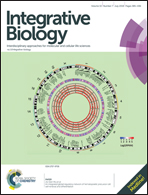Different angiogenesis modes and endothelial responses in implanted porous biomaterials
Abstract
An in vivo experimental model based on implanting porous biomaterials to study angiogenesis was proposed. In the implanted porous polyvinyl alcohol, three major modes of angiogenesis, sprouting, intussusception and splitting, were found. By electron microscopy and three-dimensional simulation of the angiogenic vessels, we investigated the morphological characteristics of the three modes and paid special attention to the initial morphological difference between intussusception and splitting, and it was confirmed that the endothelial abluminal invagination and intraluminal protrusion are pre-representations of intussusception and splitting, respectively. Based on immunohistochemical analysis of HIF-1α, VEGF and Flt-1 expressions, it was demonstrated that the dominant mode of angiogenesis is related to the local hypoxic condition, and that there is difference in the response of endothelial cells to hypoxia-induced VEGF between sprouting and splitting. Specifically, in the biomaterials implanted for 3 days, the higher expression and gradient of VEGF induced by severe hypoxia in the avascular area caused sprouting of the peripheral capillaries, and in the biomaterial implanted for 9 days, with moderate hypoxia, splitting became a dominant mode. Whether on day 3 or day 9, Flt-1 expression in sprouting endothelia was significantly higher than that in splitting endothelia, which indicates that sprouting is caused by the strong response of endothelial cells to VEGF, while splitting is associated with their weaker response. As a typical experimental example, these results show the effectiveness of the porous biomaterial implantation model for studying angiogenesis, which is expected to become a new general model.



 Please wait while we load your content...
Please wait while we load your content...